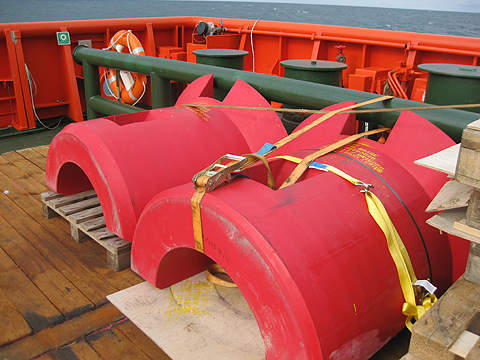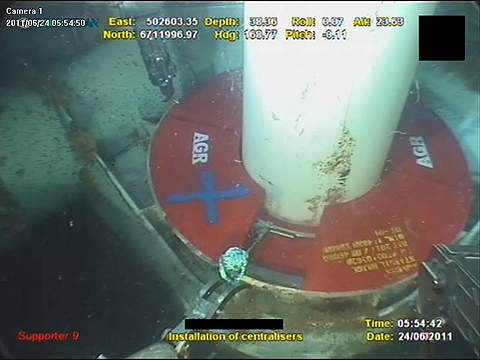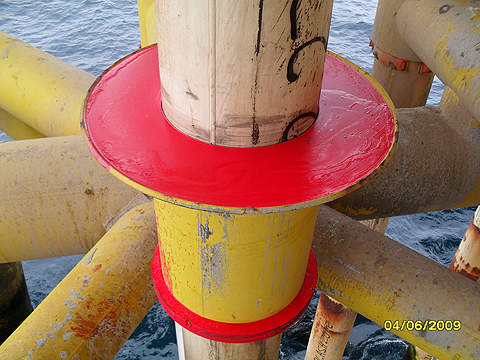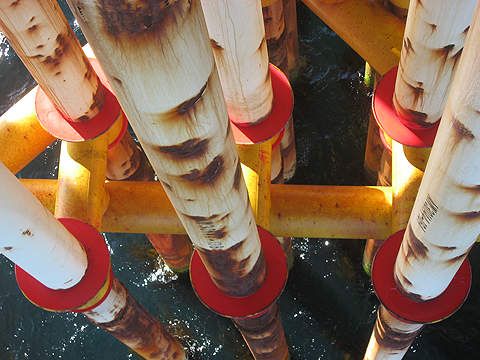Oceaneering’s CSS™ Subsea is a new solution to an old problem. Wave-induced damage to conductors and caissons is a well-known problem in the offshore world but Oceaneering’s new solution represents a safe and innovative subsea method.
In June 2011, Oceaneering successfully completed a pilot project for Statoil on the Brage platform in the Norwegian continental shelf. Two subsea conductors were successfully stabilised with Oceaneering CSS Subsea. The installation was fully performed with the use of an ROV.
Conductor stabilisation for the offshore industry
Over the past five years Oceaneering has developed the Conductor Stabilisation Solution (CSS) to improve technical safety in the offshore environment. The unique technique implements polyurethane material which has extreme durability qualities.
The solution uses an elastic polyurethane compound which provides flexibility to absorb the shock impacts caused by lateral wave movements. The void between the conductor and the guide is filled with polyurethane, eliminating all horizontal movement, but allowing vertical conductor movement, which is a design principle.
Subsea conductor stabilisation
The Oceaneering CSS Subsea solution focuses on HSE and eliminates the need for any divers. The solution offers a considerable time / cost saving operation compared to the traditional diver deployed systems.
The ROV operated subsea solution flies the prefabricated section to the installation site. The sections are zero buoyant in water prior to installation.
After the section is installed the buoyancy aid is removed and the section becomes negatively buoyant.
Benefits of the Oceaneering CSS Subsea solution include:
- No diver operation required for installation
- Operation performed 100% by ROV
- No steel to steel contact between conductor and guide
- Stabilisers are fabricated to cater for misalignment
- Stabiliser sections prefabricated onshore before start of operation
- No need for post-installation maintenance
- The material is environmentally friendly
- The material is not affected by seawater environment
Topside conductor stabilisation for offshore installations
Oceaneering’s CSS Subsea minimises wave-induced damages to an offshore installation by improving traditional techniques to obtain conductor / guide stability. Waves generate vibrations which are damaging to the conductors, risers, caissons and the installation in general. Conductors’ hammering against the guides, resulting in fatigue and fracturing, is one known problem with lateral wave movement. Repairing these damages can be costly, challenging and even dangerous.
Oceaneering has vast experience and excellent results with use of this technique on conductors, caissons and risers above sea level. The Oceaneering CSS Topside was first used on a Statoil installation in 1999. To date, no preventative maintenance has been required on this cast.
Conductor stabilisation solution
A new elastic stress-absorbent compound called Elastogran™ is cast into the entire length and diameter of the conductor guide. The Oceaneering CSS entirely replaces the traditional need for centering and chocking solutions and provides for a new, better and measurable solution.
Oceaneering CSS benefits:
- Faster and better solution than traditional methods
- Uses the entire length and width of guide
- Three-step easy implementation
- Reduces wave-induced impact and damage
- Increased guide stability
- Extends life of conductors and caissons
- Subsea application
- No maintenance and long-lasting solution






